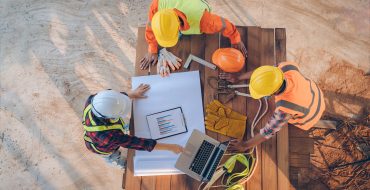
How is the Construction Industry Using Technology?
Technology has become a part of our day-to-day lives and it is used in almost all aspects of our daily lives. Technology has had a huge impact on our human lives, the way we communicate, the way we learn, and the way we perform several tasks, all of this is influenced by technology. Nowadays almost every industry is taking benefits from the effective utilization of technology. One of such industries that benefited from technology is the Construction industry. The latest Technology has helped construction companies to improve the quality of their projects, improve their efficiencies, and reduce costs by making use of the latest technology.
Let’s have a closer look at how the construction industry is making use of the latest technology and getting benefited from it.
Building Information Modelling
Building Information Modelling is one of the biggest advancements in the field of Construction in recent years. BIM has replaced the need for a blueprint to be produced at the start of any construction project. BIM involves the detailed and interactive 3D model of an asset to be produced before the start of a project. This modeling process removes the problem of contractors and clients working separately and allows all the parties involved to work together. BIM brings time management, reduces the costs required, and improves the quality of the project.
Augmented Reality
AR or Augmented Reality is a piece of technology that allows the data and images to be overlaid into physical spaces. For complicated projects, AR is one of the best pieces of technology available as it can highlight potential hazards and issues before they are materialized. It prevents unforeseen complications from happening and prevents a project from falling behind the schedule. It makes things easier and simpler for planners and architects as they can plan things out prior to materialization and amend any problems before they occur.
Drones
Drones are one of the most useful pieces of technology that are being used across the construction industry nowadays. Drones can be used for various purposes in the construction industry. They are used to meet various requirements of the construction industry such as creating accurate site inspection reports, land surveys, etc. These are replacing previous methods that took a very long time for the completion of these things.
Drones have the advantage of capturing all the required information in very little time and also eliminates the human error that arises when humans are capturing the data. There are now specifically designed drones for conduction induction that are more than sufficient for most construction sites.
Construction Mobile Apps
There are plenty of different mobile apps available that are used by many construction experts across the world. These apps let the construction workers access and share important information regarding the project while they are on-site, working. These apps also help the construction companies to improve their project efficiency, accuracy, and consistency.
Indian Government is also helping the construction companies and even the general public through portals such as SSMMS, TNREGINET, etc. Through these portals, the citizens can order various construction materials such as Sand required for construction and also access various other services.
Construction Devices & Gadgets
There are also devices that are specifically built for those who work at construction sites. These websites are durable, rugged, and stronger than ordinary devices and feature hardware that is meant to last while working on construction sites. Such smartphones are very common nowadays and they feature rugged construction screens, feature screens that are better suited for viewing in bright daylight.
Safety of the Workers
Not only does the latest technology help the construction companies improve the efficiency of the projects and deliver high-quality services but it can also influence the health and safety of the workers. There are various innovative devices and gadgets available such as light-up hard hats and responsive clothing that can affect the health and safety of the workers working in construction companies.
The construction industry is now adapting to this change and companies have started to implement technology into their various techniques. Companies are now researching and implementing construction technology. By the implementation of construction technology, companies are able to increase their productivity, manage and collaborate on projects in an efficient manner, and also complete the projects in less time and budget to gain higher profit margins for themselves.
It is no surprise that companies who have refused to adapt to this change and invest in new solutions and technologies are destined to die. They aren’t gonna stay in the competition because the customers are gonna choose the company/firm that has the latest technology and solutions to get the job done.